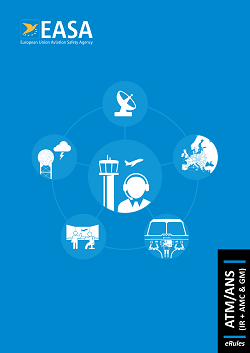CNS.OR.100 Technical and operational competence and capability
Regulation (EU) 2017/373
(a) A communication, navigation or surveillance services provider shall ensure the availability, continuity, accuracy and integrity of their services.
(b) A communication, navigation or surveillance services provider shall confirm the quality level of the services they are providing, and shall demonstrate that their equipment is regularly maintained and, where required, calibrated.
AMC1 CNS.OR.100 Technical and operational competence and capability
ED Decision 2021/008/R
(a) In this AMC:
(1) SAR point of contact (SPOC)’ refers to a SAR point of contact that is designated by a State to receive COSPAS-SARSAT distress data in accordance with ICAO Annex 12;
(2) ‘competent SPOC’ refers to the SAR point of contact that is competent for the SAR region(s) where an aircraft in distress is indicated to be by the transmitted information; and
(3) ‘transmission service for locating an aircraft in distress’ refers to a service that transmits to the competent SPOC information that is contained in signals sent by an airborne system, to comply with point CAT.GEN.MPA.210 ‘Location of an aircraft in distress’ of Annex IV (Part-CAT) to Regulation (EU) No 965/2012 (‘Air OPS Regulation’).
(b) A surveillance service provider for which EASA is the competent authority pursuant to Article 80 of Regulation (EU) No 2018/1139 (‘Basic Regulation’) may provide the transmission service as per point (a) of this AMC; in that case, the surveillance service provider should:
(1) establish the performance specifications of the transmission service as per point (a);
(2) establish a list of airborne systems that are compatible with their use for locating an aircraft in distress as specified in the Certification Specifications for Airborne Communications, Navigation and Surveillance (CS-ACNS), Subpart E, Section 3;
(3) demonstrate that the transmission service as per point (a) can:
(i) automatically process activation signals and deactivation signals that are received from any compatible airborne system that is listed as per point (b)(2) of this AMC in the conditions specified in the CS-ACNS Subpart E, Section 3; and
(ii) automatically transmit to the competent SPOC the information that is contained in those signals;
(4) demonstrate that the transmission service as per point (a) can process signals that are simultaneously transmitted by up to 15 compatible airborne systems as per point (b)(2);
(5) demonstrate that the total time from transmission of a signal by a compatible airborne system as per point (b)(2) to delivering the corresponding data to the competent SPOC does not exceed 20 minutes, with a probability of 95 %;
(6) demonstrate that the SPOC contact information that is used by the transmission service as per point (a) to meet point (b)(3) of this AMC is global and that there are processes to maintain this information up to date;
(7) deliver the data to the competent SPOC in plain text and in a format recognised by the International Aeronautical and Maritime Search and Rescue Manual (IAMSAR Manual); and
(8) perform an operational record-keeping function that:
(i) integrally records data corresponding to signals transmitted by a compatible airborne system as per point (b)(2);
(ii) retains this data for at least 30 days; and
(iii) can retrieve data that is recorded in the preceding 48 hours within 30 minutes of receiving an appropriate request.
